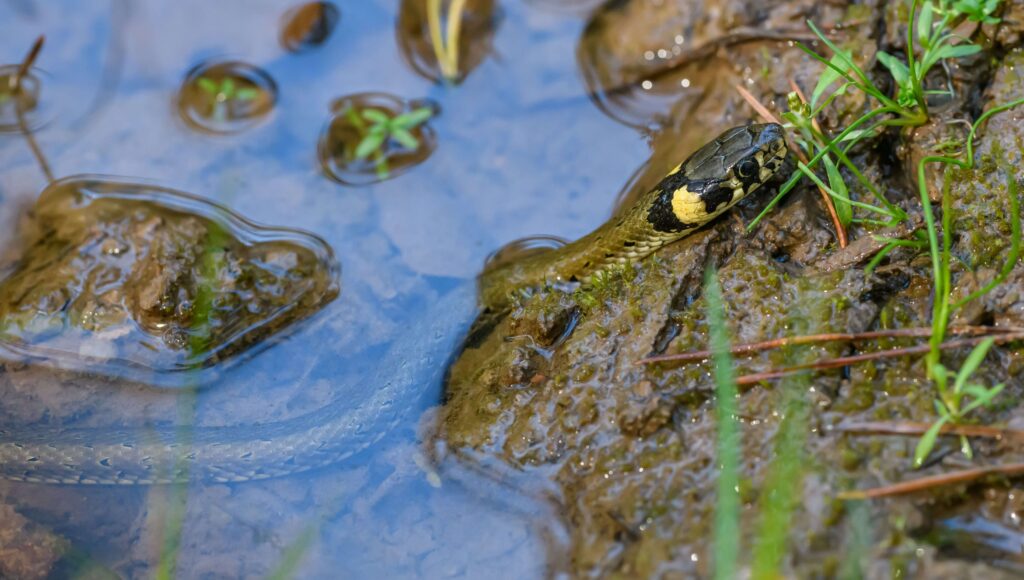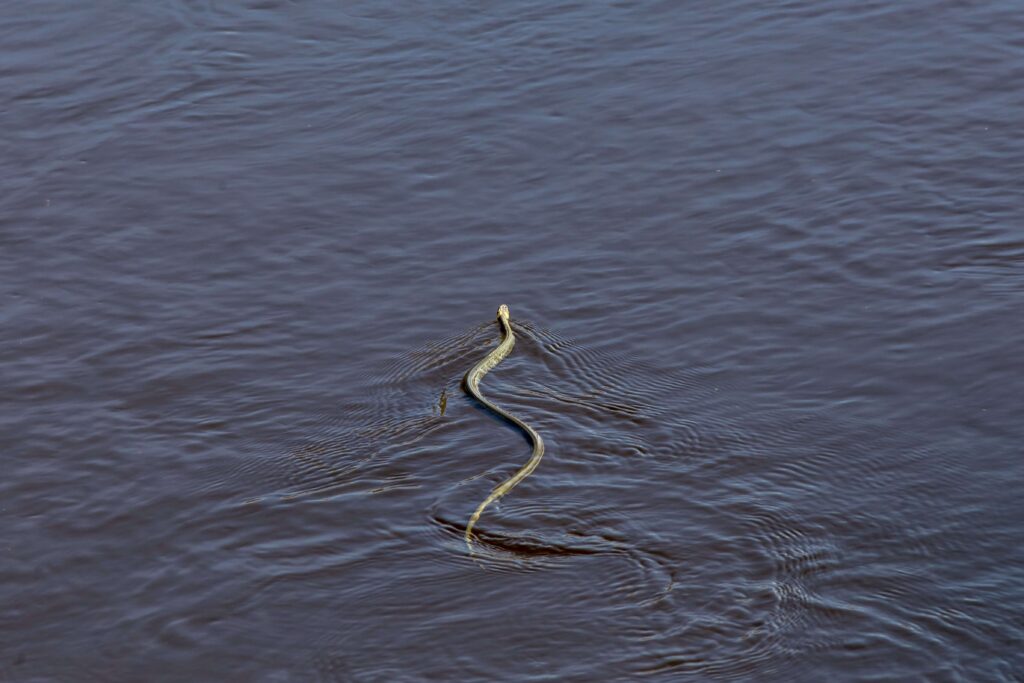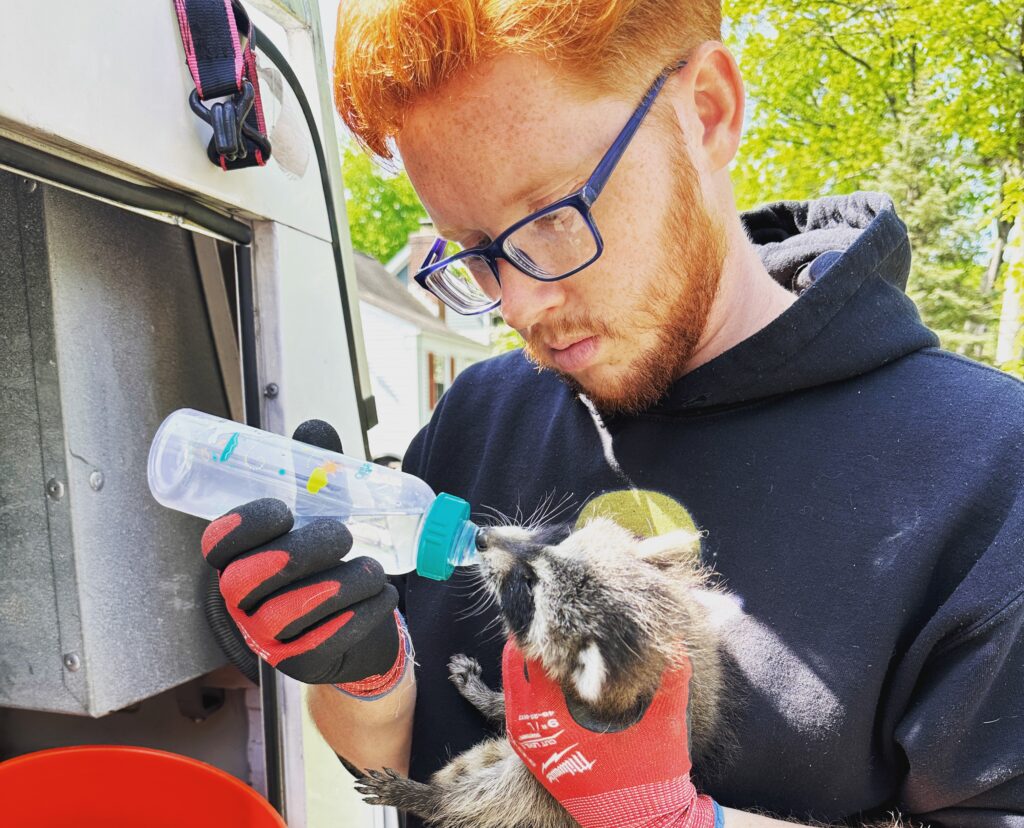In the Garden State of New Jersey, the fascinating world of aquatic ecosystems is home to a diverse array of wildlife, including the intriguing NJ Water Snakes. These serpentine inhabitants play a crucial role in the delicate balance of the state’s aquatic environments, yet their elusive nature often leaves them shrouded in mystery. Understanding the habitat and behavior of NJ Water Snakes is essential not only for the sake of ecological knowledge but also for fostering a harmonious coexistence between these creatures and the communities they inhabit.
NJ Water Snakes, with their unique characteristics and behaviors, navigate a variety of aquatic environments throughout the state, from freshwater ponds to marshes and streams. Identifying and comprehending the nuances of these different species is a key step in appreciating the rich biodiversity within New Jersey.
As we delve into the lives of NJ Water Snakes, we uncover not only their distinctive behaviors but also the significant role they play in maintaining the health of their habitats. From their daily routines to their reproductive patterns, these snakes contribute to the intricate web of life in New Jersey’s water bodies.
Key Takeaways
- New Jersey's waterways host diverse NJ Water Snakes, each with distinct traits and roles.
- NJ Water Snakes demonstrate adaptability to various aquatic environments, contributing to their widespread presence.
- Understanding the behavior of NJ Water Snakes offers valuable knowledge about their daily routines, reproductive patterns, and ecological interactions.
- NJ Water Snakes face threats like habitat loss, emphasizing the need for urgent conservation measures to safeguard their populations.
- Educating the public fosters a harmonious relationship, dispelling fears and promoting coexistence with NJ Water Snakes.
Species Identification
In the realm of NJ Water Snakes, a diverse array of species thrives, each exhibiting unique characteristics that contribute to the rich tapestry of New Jersey’s aquatic ecosystems. One commonly encountered species is the Northern Water Snake (Nerodia sipedon), easily recognizable by its dark coloration, distinctive markings, and robust body. These non-venomous snakes are often found near freshwater habitats, making them a familiar sight for those exploring the state’s waterways.
Another notable inhabitant is the Eastern Ribbon Snake (Thamnophis sauritus), a slender and agile species often mistaken for a garden snake. Their striking appearance, marked by a long, thin body and distinct lateral stripes, sets them apart within the NJ Water Snake community. These snakes are adept swimmers, navigating the waters with grace and contributing to the overall biodiversity of their chosen habitats.
The Queen Snake (Regina septemvittata) is a specialized member of the NJ Water Snake family, favoring clean, flowing streams. With their slender bodies and characteristic yellow stripes, these snakes are well-adapted to their aquatic lifestyle, feeding primarily on aquatic insects.
Habitat of NJ Water Snakes
In the enchanting waterways of New Jersey, the habitat of NJ Water Snakes is as diverse as the species themselves. These remarkable reptiles are well-adapted to a variety of aquatic environments, from serene ponds to meandering streams and marshy wetlands. One common denizen of these habitats is the Northern Water Snake (Nerodia sipedon), often found basking near the water’s edge or skillfully navigating the shallows in search of prey.
The Eastern Ribbon Snake (Thamnophis sauritus) exhibits a preference for habitats with a mix of open water and vegetation, providing them with ample opportunities for both swimming and foraging. Their affinity for these environments makes them a frequent sight in New Jersey’s wetlands and along the edges of ponds.
In contrast, the Queen Snake (Regina septemvittata) is highly specialized, favoring clean, flowing streams with rocky substrates. These habitats not only offer suitable shelter but also an abundant supply of their preferred diet—aquatic insects.
Behavior Patterns
The behavior patterns of NJ Water Snakes paint a captivating picture of their lives within the aquatic landscapes of New Jersey. These serpentine inhabitants, such as the Northern Water Snake (Nerodia sipedon), exhibit a range of daily and seasonal activities. Basking on sunny rocks or logs is a common sight as they regulate their body temperature, showcasing their cold-blooded nature. Their agile movements both on land and in water reflect their adept navigation of diverse environments.
Come the breeding season, NJ Water Snakes, including the Eastern Ribbon Snake (Thamnophis sauritus), engage in fascinating courtship rituals. Mating often takes place in or near water, underscoring their strong association with aquatic habitats. Observing these behaviors not only offers a glimpse into their reproductive strategies but also underscores the importance of preserving the habitats that facilitate these crucial life events.
The Queen Snake (Regina septemvittata), with its preference for flowing streams, showcases distinctive behaviors in its pursuit of aquatic insects. Their adept swimming skills and ability to hunt underwater highlight the adaptability of NJ Water Snakes to their specific habitats.
Understanding the behavior patterns of NJ Water Snakes contributes not only to our appreciation of their natural history but also to the broader ecological understanding of New Jersey’s water ecosystems. It underscores the delicate balance these creatures maintain within their habitats, emphasizing the need for conservation efforts to ensure the continued well-being of both the snakes and their aquatic homes.

Conservation Status
The conservation status of NJ Water Snakes is a critical concern in the ongoing efforts to preserve the biodiversity of New Jersey’s aquatic ecosystems. As with many wildlife species, these snakes face various threats that impact their populations. Factors such as habitat loss due to urbanization, pollution of water bodies, and alteration of natural landscapes pose significant challenges to the well-being of NJ Water Snakes.
The Northern Water Snake (Nerodia sipedon) and other species in this group are particularly vulnerable to human activities that disrupt their habitats. Recognizing the importance of these snakes in maintaining ecological balance, conservationists and researchers are actively engaged in efforts to monitor and safeguard their populations.
Conservation initiatives focus on raising awareness about the significance of NJ Water Snakes within their ecosystems. By educating the public about coexistence and the importance of preserving their habitats, conservationists hope to mitigate human-wildlife conflicts and foster a greater understanding of these fascinating creatures.
Human-Wildlife Conflict
The coexistence between humans and NJ Water Snakes sometimes gives rise to misconceptions and fears, leading to a human-wildlife conflict that, with understanding, can be mitigated. Commonly encountered species like the Northern Water Snake (Nerodia sipedon) may cause alarm due to their appearance, leading to unnecessary concerns about their presence near recreational water areas. It’s crucial to dispel these misconceptions, as these snakes play a vital role in controlling populations of aquatic pests, contributing to the health of their habitats.
Educating the public about the non-venomous nature of NJ Water Snakes, such as the Eastern Ribbon Snake (Thamnophis sauritus), is essential to fostering a sense of coexistence. These snakes are harmless and are, in fact, beneficial in managing insect populations, particularly those that can be nuisances in and around water bodies.
The Queen Snake (Regina septemvittata), with its preference for clean, flowing streams, may occasionally cross paths with humans enjoying recreational activities. Understanding that these encounters are part of the natural order can help reduce unnecessary concerns and ensure the safety of both humans and the snakes.
Research and Studies
Ongoing research and studies on NJ Water Snakes are crucial for expanding our understanding of these fascinating reptiles and their roles within New Jersey’s aquatic ecosystems. Scientists and researchers are delving into various aspects of their biology, behavior, and ecological significance to contribute valuable insights that aid in conservation efforts.
One area of focus in research involves investigating the impact of environmental changes on the habitats of NJ Water Snakes, particularly with the increasing pressures of urbanization and climate change. Understanding how these snakes adapt to and are affected by alterations in their surroundings is vital for implementing effective conservation strategies.
Researchers are also exploring the interplay between NJ Water Snakes and other species within their ecosystems. By studying their interactions with prey, predators, and fellow inhabitants, scientists gain a holistic view of the ecological dynamics these snakes participate in, contributing to a broader understanding of aquatic biodiversity in New Jersey.
Moreover, ongoing studies aim to uncover the nuances of the reproductive behavior of NJ Water Snakes, shedding light on their breeding habits and lifecycle. This knowledge is pivotal for developing targeted conservation measures that support their reproductive success.
FAQs
What are NJ Water Snakes, and how are they different from other snake species in New Jersey?
NJ Water Snakes refer to a group of serpentine reptiles inhabiting aquatic environments in New Jersey. They are distinct for their adaptations to water habitats, which set them apart from terrestrial snake species in the region.
Are NJ Water Snakes dangerous?
Generally, NJ Water Snakes are non-venomous and pose no threat to humans. However, like any wildlife, it’s advisable to observe them from a safe distance and avoid unnecessary interaction.
Where can NJ Water Snakes be found in New Jersey?
NJ Water Snakes inhabit a variety of aquatic environments, including ponds, streams, wetlands, and marshes, distributed across different regions of New Jersey.
How do NJ Water Snakes contribute to the ecosystem?
NJ Water Snakes play a crucial role in maintaining the ecological balance of aquatic ecosystems by controlling pest populations, contributing to the health of their habitats.
What should I do if I encounter a NJ Water Snake?
If you encounter a NJ Water Snake, observe from a distance. They are generally non-aggressive. Avoid disturbing or attempting to handle them, as this ensures both your safety and the well-being of the snake.
Conclusion
In conclusion, the enigmatic world of NJ Water Snakes unravels a captivating narrative of adaptation, behavior, and ecological significance within the aquatic landscapes of New Jersey. From the Northern Water Snake’s familiar presence near freshwater habitats to the Eastern Ribbon Snake’s slender elegance and the Queen Snake’s specialized affinity for flowing streams, each species contributes to the biodiversity of the state. Understanding their behavior unveils a tapestry of daily and seasonal activities, shedding light on their role in maintaining the delicate balance of their habitats.
However, the conservation status of NJ Water Snakes remains a concern, with habitat loss and human-induced threats posing challenges to their well-being. Initiatives aimed at raising awareness, fostering coexistence, and supporting ongoing research are integral to ensuring the survival of these remarkable reptiles. As we navigate the waters of knowledge surrounding NJ Water Snakes, let us appreciate not only their intrinsic value but also the urgent need to protect their habitats, safeguarding the ecological harmony they bring to New Jersey’s diverse aquatic ecosystems.


